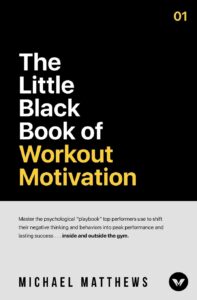In the world of bodybuilding, physical strength is only half the battle. The mental game, particularly finding that perfect motivational sweet spot before hitting the weights, can make the difference between an average session and a growth-stimulating workout that pushes boundaries. Whether you’re a seasoned competitor or just starting your bodybuilding journey, these scientifically-backed and field-tested motivation strategies will help you tap into your full potential every time you step into the gym.

The Psychology Behind Pre-Workout Motivation
Before diving into specific strategies, it’s important to understand what’s happening in your brain before a workout. Pre-workout motivation isn’t just about feeling “pumped”—it’s about activating your sympathetic nervous system, increasing catecholamine release (adrenaline and noradrenaline), and preparing your neural pathways for intense physical output.
Studies have shown that proper mental preparation can:
- Increase maximum strength output by 8-12%
- Improve mind-muscle connection
- Enhance workout focus and decrease perception of effort
- Significantly reduce the chance of skipping workouts
Now, let’s explore the most effective methods to harness this power.
Goal-Setting: The Foundation of Motivation
Micro-Goal Strategy
Rather than vague intentions like “have a good chest day,” successful bodybuilders implement a micro-goal approach:
- Set specific numbers for each exercise – Example: “4 sets of incline bench, aiming for 8 reps at 225lbs, with the final set as an AMRAP (as many reps as possible)”
- Create a progression goal – Example: “Add 2.5lbs to my working sets from last week”
- Establish a “minimum acceptable workout” – Even on your worst days, having a baseline performance standard ensures you don’t waste a session
Pro tip: Write these goals in your training journal or phone before arriving at the gym. The act of documentation increases commitment and accountability.
Visualization Techniques Used by Elite Bodybuilders
The practice of visualization isn’t just motivational fluff—it’s a neurological preparation technique used by Olympia champions and elite athletes across all sports.
The 10-Minute Pre-Workout Visualization Protocol:
- Find a quiet space 5-10 minutes before your workout
- Close your eyes and control your breathing with slow, deliberate breaths
- See yourself performing each exercise with perfect form
- Feel the specific muscles contracting and stretching
- Visualize overcoming specific sticking points in your lifts
- Imagine the pump and satisfaction after completing the workout
Dorian Yates, six-time Mr. Olympia, famously used visualization before each workout, mentally rehearsing every rep before touching a weight.
The Science of Music as a Performance Enhancer
Music isn’t just background noise—it’s one of the most powerful legal performance enhancers available to bodybuilders.
Creating the Ultimate Pre-Workout Playlist:
- BPM (Beats Per Minute) matters – Research indicates songs between 120-140 BPM are optimal for weight training
- Lyrical content affects mindset – Songs with themes of power, overcoming obstacles, or aggression can trigger beneficial hormonal responses
- Familiarity breeds intensity – Tracks with personal significance often outperform generically “motivational” songs
- Progressive intensity – Structure your playlist to build in intensity as your workout progresses
Scientific insight: Studies show that synchronized music can reduce perceived exertion by up to 12% and increase endurance by up to 15%.
Harnessing Visual Motivation: Progress Tracking and Comparison
Our brains respond powerfully to visual evidence of progress—it’s why progress photos and training logs are such effective motivational tools.
The Pre-Workout Review Ritual:
- Compare current physique photos to previous benchmarks – Keep a dedicated album on your phone
- Review strength progressions from previous workouts – Note specifically where you’ve improved
- Set visual anchors in the gym – Some bodybuilders train in the same spot to visually gauge progress against fixed reference points
Advanced strategy: Create a digital or physical “motivation board” with your physique goals, inspirational quotes, and progress milestones that you review before heading to the gym.
Pre-Workout Rituals and State Anchoring
The most consistent bodybuilders develop powerful pre-workout rituals that signal to their body and mind that it’s time to perform.
Components of an Effective Pre-Workout Ritual:
- Consistent timing – Training at the same time each day leverages your body’s circadian rhythms
- Supplement stack – Whether it’s caffeine, pre-workout formulas, or specific nutrients, the ritual of consumption matters
- Wardrobing effect – The psychological impact of changing into specific training clothes can trigger a performance mindset
- Physical priming movements – Light dynamic stretching or activation exercises signal the transition to workout mode
Physiological fact: Pre-workout rituals help trigger anticipatory hormone release, preparing your body for exertion before you even begin.
The Social Dimension: Training Partners and Accountability
The right training partner isn’t just a spotter—they’re a psychological catalyst for performance.
Maximizing the Training Partner Effect:
- Complementary strengths – The ideal partner challenges your weaknesses
- Constructive competition – Healthy rivalry can increase testosterone levels and performance
- Verbalized commitments – Stating your goals aloud to a partner increases follow-through by up to 65%
- Form feedback loop – A partner provides both motivation and technique correction
For those who train alone, virtual communities and online training groups can provide similar accountability benefits, though with less immediate feedback.
Motivational Content Consumption: Timing Is Everything
The digital age has given bodybuilders unprecedented access to motivational content, but timing this consumption is critical.
Strategic Content Consumption:
- Pre-gym window (30-60 minutes before) – The optimal time to consume motivational videos, transformation stories, or training footage
- Content selection strategy – Choose videos related to the specific body parts you’re training that day
- Avoid the comparison trap – Select content that inspires rather than intimidates
Pro tip: Create a curated playlist of 5-10 minute motivational clips specifically for pre-workout viewing. Rotate them to prevent desensitization.
The Science of Self-Talk and Cognitive Reframing
The internal dialogue running through your mind significantly impacts your physical performance. Elite bodybuilders master the art of productive self-talk.
Cognitive Reframing Techniques:
- Replace limiting statements with empowering alternatives:
- Instead of: “I’m too tired for a good workout today”
- Use: “Pushing through fatigue builds mental toughness and stimulates growth”
- Employ evidence-based affirmations:
- “I’ve handled heavier weights before”
- “My body responds well to progressive overload”
- “Each rep brings me closer to my goals”
- Use tactical questioning:
- “What would happen if I approached this workout as if I were at my absolute best?”
- “How would my idol approach this training session?”
Neurological note: Research shows that positive self-talk activates areas of the brain associated with motor control and focus, directly improving physical performance.
Leveraging Post-Workout Reward Anticipation
The anticipation of reward is a powerful motivational force that can be strategically employed before workouts.
Creating an Effective Reward System:
- Immediate physiological rewards – Visualize the endorphin release and “pump” satisfaction
- Scheduled nutrition rewards – The post-workout meal can be both physiologically necessary and psychologically rewarding
- Progress tracking rewards – The satisfaction of documenting new achievements
- Longer-term milestone rewards – Planned celebrations for achieving specific body composition or strength goals
Biochemical insight: Anticipating rewards triggers dopamine release, which not only motivates action but improves focus and performance during the activity itself.
Embracing Competitive Mindset Techniques
Competition—even when it’s only against yourself—activates primal motivational pathways that can transform workout intensity.
Competitive Mindset Strategies:
- Personal records (PR) attacks – Designate specific days to attempt to break previous records
- Density training challenges – Complete more work in the same or less time than previous workouts
- Virtual competitions – Use fitness apps to compete against others or your previous performances
- The “one more” principle – Always attempting one more rep or slightly more weight than you think possible
Psychological perspective: The competitive mindset activates the ancient part of our brain responsible for survival and dominance, temporarily overriding perceived limitations.
Implementing a Pre-Workout Mental Warm-Up
Just as your muscles need warming up, your mind benefits from a systematic preparation process. Top bodybuilders often use a mental warm-up sequence that looks something like this:
- 1-2 minutes: Centering – Deep breathing and mental clearing
- 2-3 minutes: Goal review – Mental or written review of today’s specific targets
- 3-5 minutes: Visualization – Mentally rehearsing key lifts and feelings
- 1-2 minutes: Activation statements – Verbal or mental affirmations
- 1 minute: Focus narrowing – Eliminating distractions and honing attention
Overcoming Motivational Obstacles: Troubleshooting Guide
Even the most dedicated bodybuilders face motivational challenges. Here’s how to address common obstacles:
Low Energy Days:
- Modify, don’t skip – Reduce volume but maintain intensity
- Focus on technique perfection rather than maximum loads
- Use pre-workout supplements strategically (cycling to prevent tolerance)
Plateaus and Frustration:
- Review progress from a longer timeline perspective (6-month changes vs. weekly)
- Implement unexpected challenge sets (drop sets, rest-pause, etc.)
- Change your environment – train at a different time or location
Mental Burnout:
- Implement planned deload weeks with different motivational approaches
- Cross-train with enjoyable activities that complement bodybuilding
- Use guided meditation specifically designed for athletes (5-10 minutes pre-workout)
Conclusion: Customizing Your Motivational Protocol
The most effective pre-workout motivation strategy is one tailored to your personal psychology and training style. Experiment with the techniques outlined above, tracking which combinations produce your best workouts. Remember that motivation isn’t static—it requires regular refreshing and adaptation as you progress in your bodybuilding journey.
By systematically addressing both the physiological and psychological aspects of pre-workout preparation, you’ll consistently access your maximum potential in the gym. The body can only follow where the mind leads—make sure your mind is primed for greatness before every training session.
Hey there! We hope you love our fitness programs and the products we recommend. Just so you know, Symku Blog is reader-supported. When you buy through links on our site, we may earn an affiliate commission at no extra cost to you. It helps us keep the lights on. Thanks.
Disclaimer: The information provided in this discussion is for general informational and educational purposes only. It is not intended as medical or professional advice. Only a qualified health professional can determine what practices are suitable for your individual needs and abilities.


